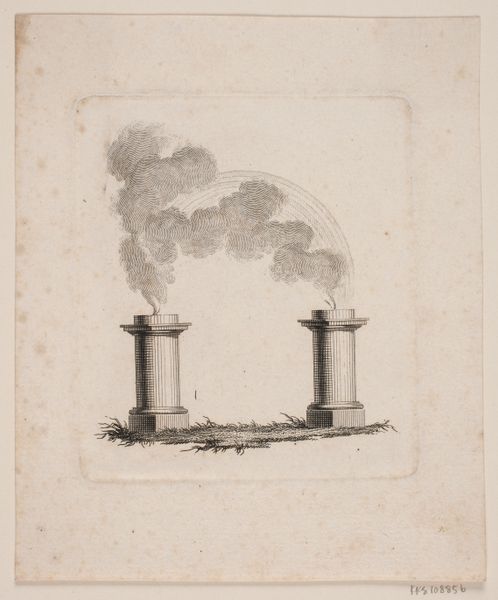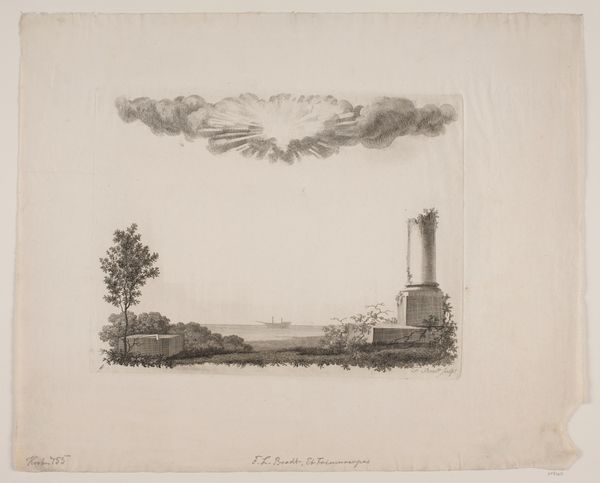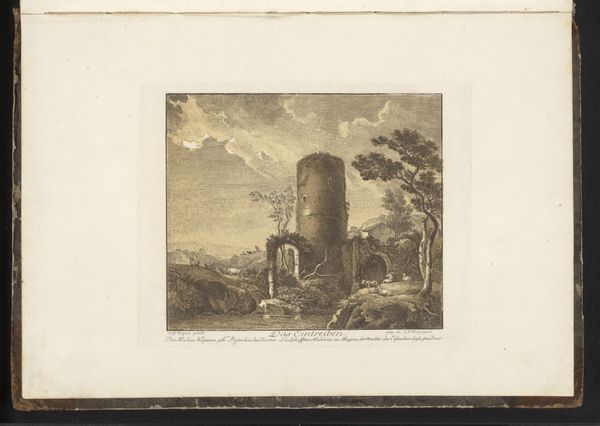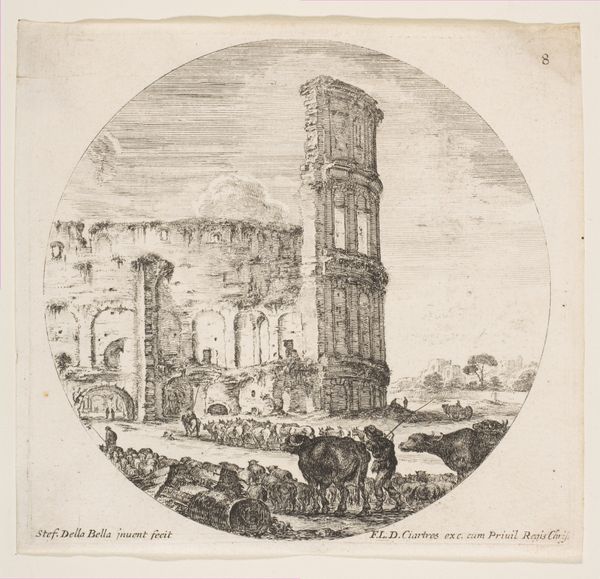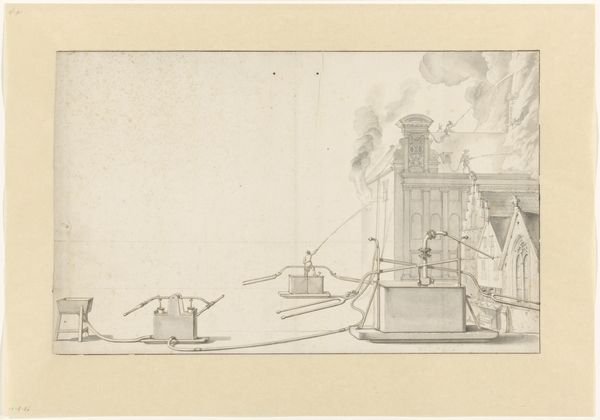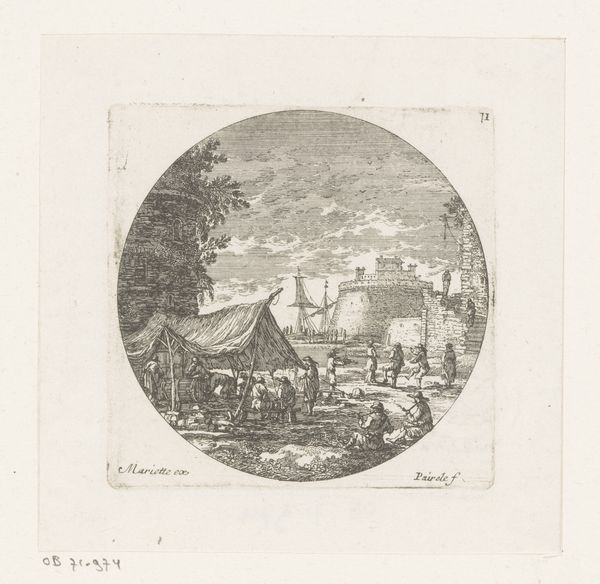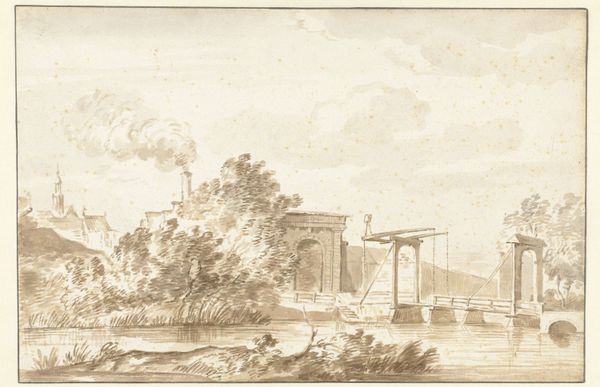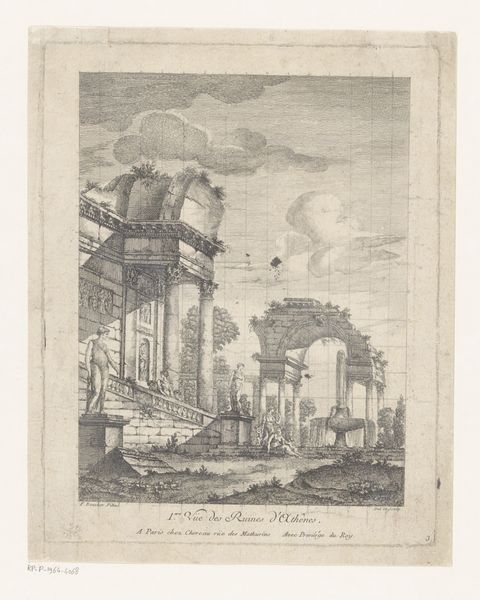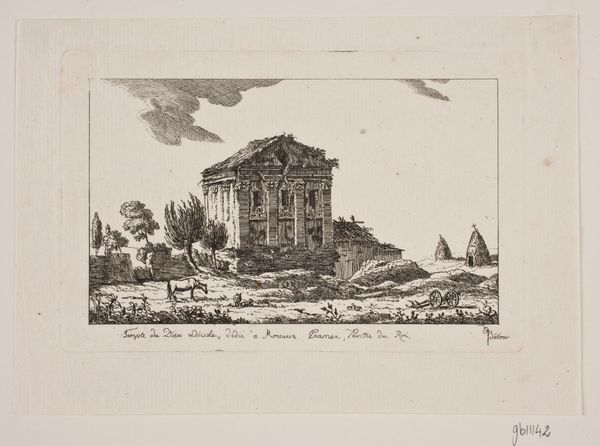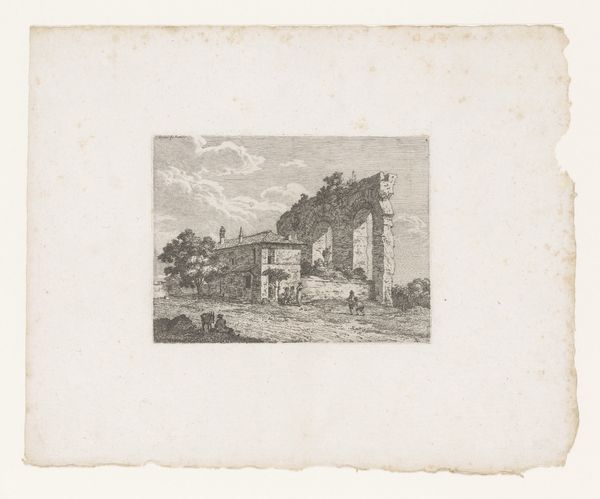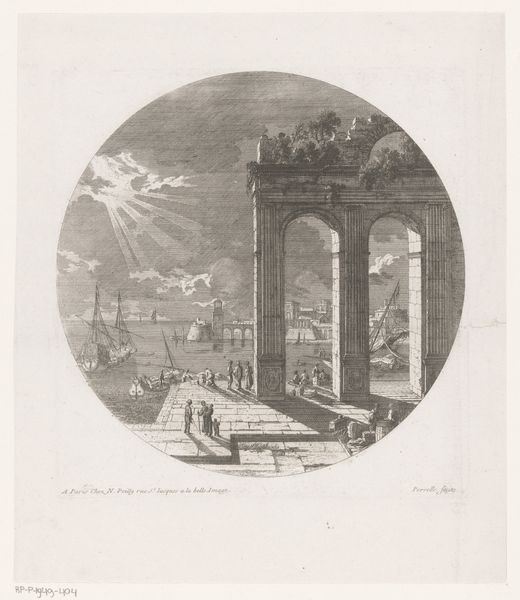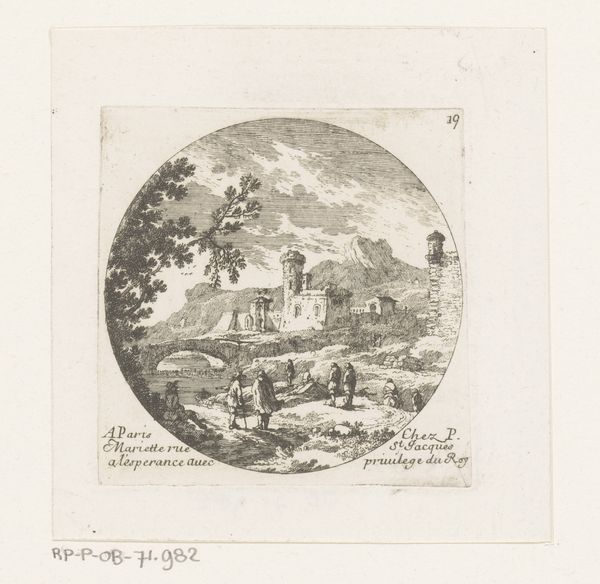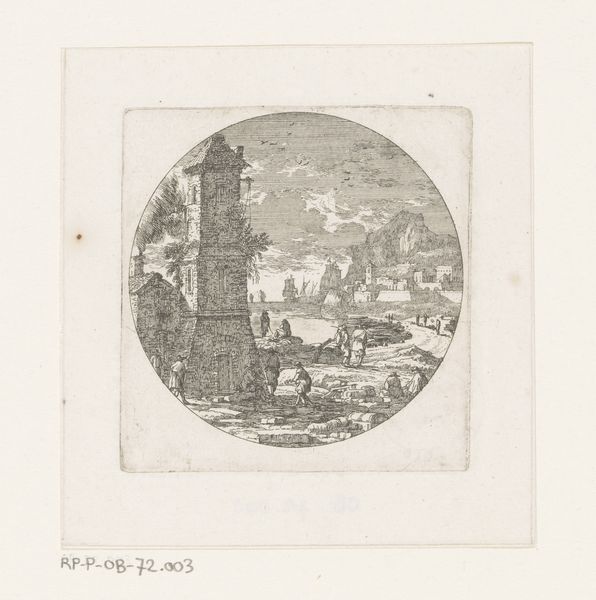
print, engraving
#
neoclacissism
# print
#
landscape
#
engraving
Dimensions: 101 mm (height) x 106 mm (width) (billedmaal)
Curator: Before us, we have J.F. Clemens's "Vignet. To altre" from 1788, a print crafted with engraving techniques, here at the SMK. Editor: Immediately, I’m struck by the strange calmness of it. There’s smoke, yet a clear sky, the pillars rigid but symmetrical. An odd marriage of agitation and tranquility. Curator: Interesting point. The print embodies neoclassical ideals, prioritizing symmetry, order, and rational composition, but you are right it’s also attempting a sublimity with its imagery. The wisps of smoke almost connect with an engraved rainbow shape, yet it still retains a structured landscape. Editor: Precisely. The very notion of neatly etched smoke forming a rainbow feels almost perverse – imposing artificial structure upon natural ephemerality. I imagine a rainbow more vivid, alive, than what has been provided here. It highlights an interesting intersection, perhaps tension, between natural occurrences and Enlightenment aspirations. Curator: It suggests Clemens was considering both natural phenomenon and architectural principles. Engraving allows fine control; it gives a lot of detail, if we observe how he treated each object carefully – from each tiny line describing smoke to each long verticle stroke describing the shape of each tower. This all communicates both the transient, inconstant nature of existence alongside society’s aspirations to permanency, even immortality. Editor: And where does this artwork exist in the social conscious and sphere during the late 18th century? Is this a memento mori or commentary on enlightenment values. What sociopolitical environment did J.F. Clemens want to promote in its audience. Curator: We are on familiar ground then. Clemens likely lived a life very similar to ours, where values such as these are always shifting. This is why such careful attention to structure and visual form would serve well for many centuries beyond him to continue provoking us into reflection of meaning, impermanence, and permanence in time and the natural world. Editor: It definitely gives you a lot to think about with each viewing, especially considering Clemens himself might not ever come to a similar answer about it.
Comments
No comments
Be the first to comment and join the conversation on the ultimate creative platform.
